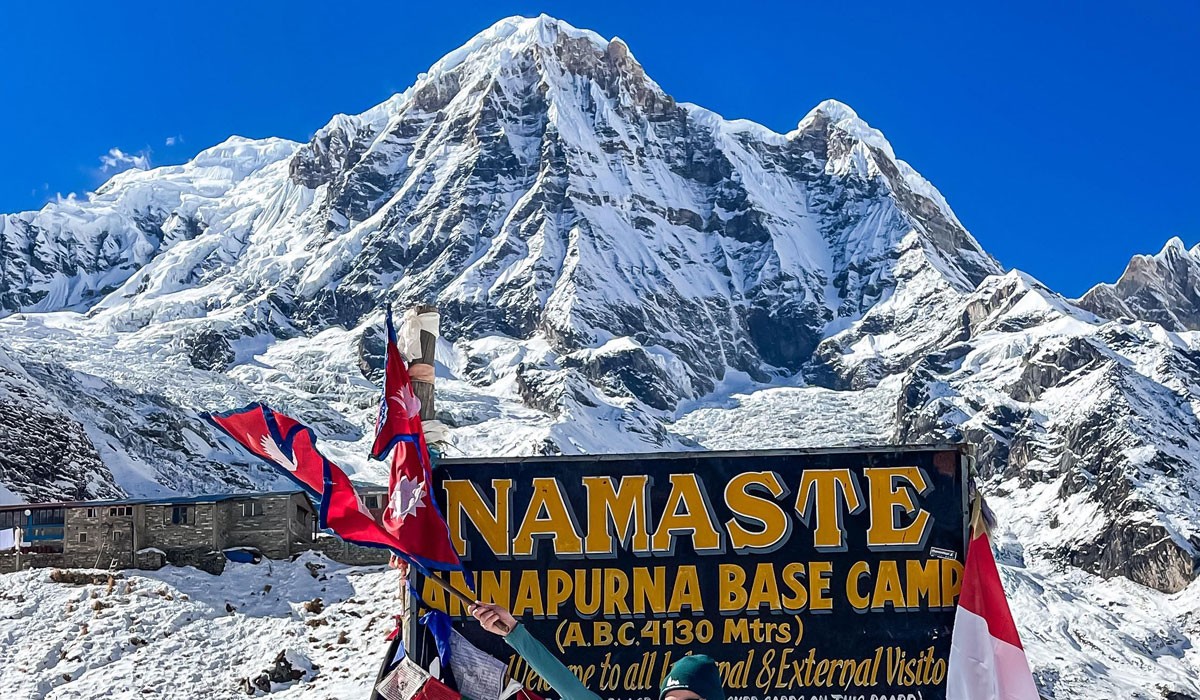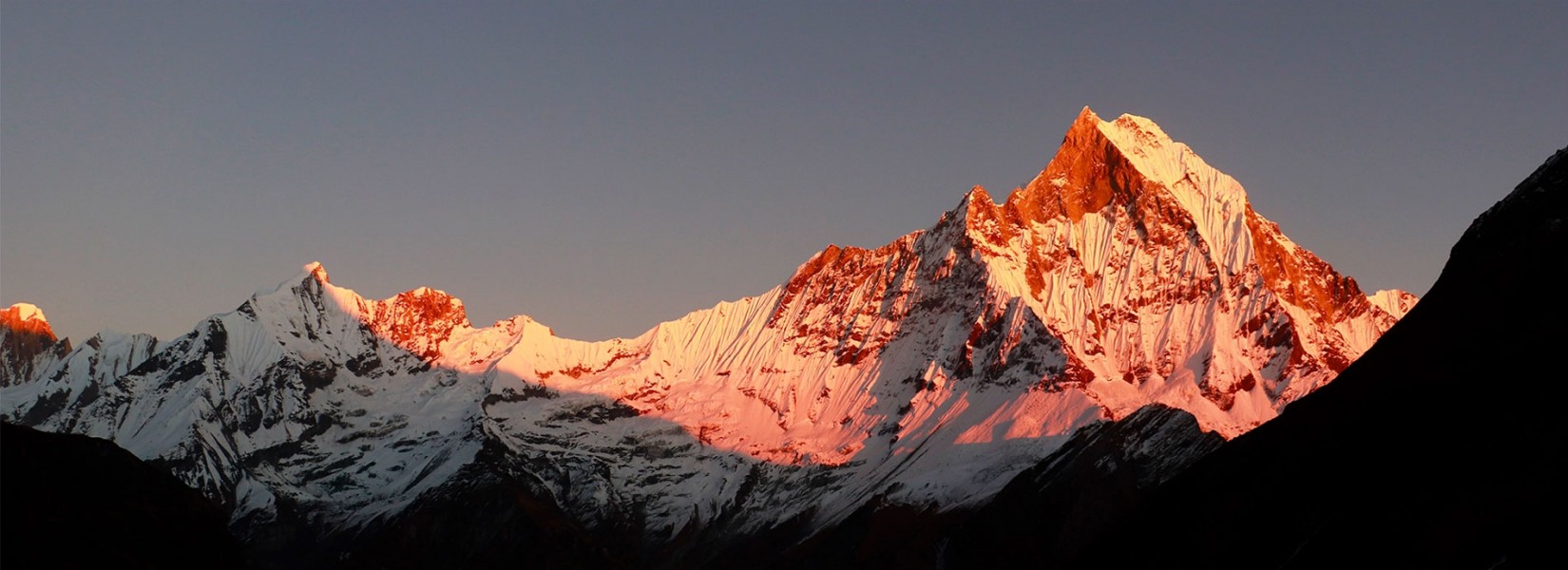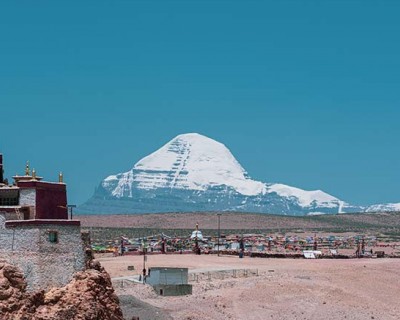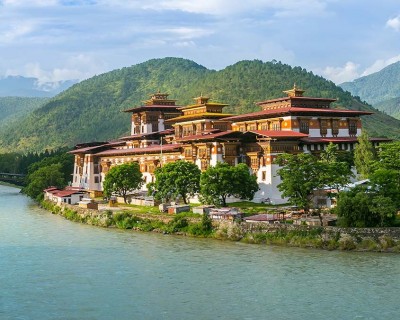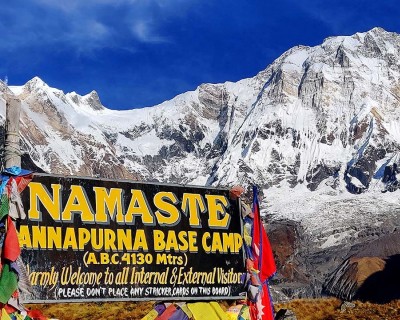Annapurna Base Camp Trek in January
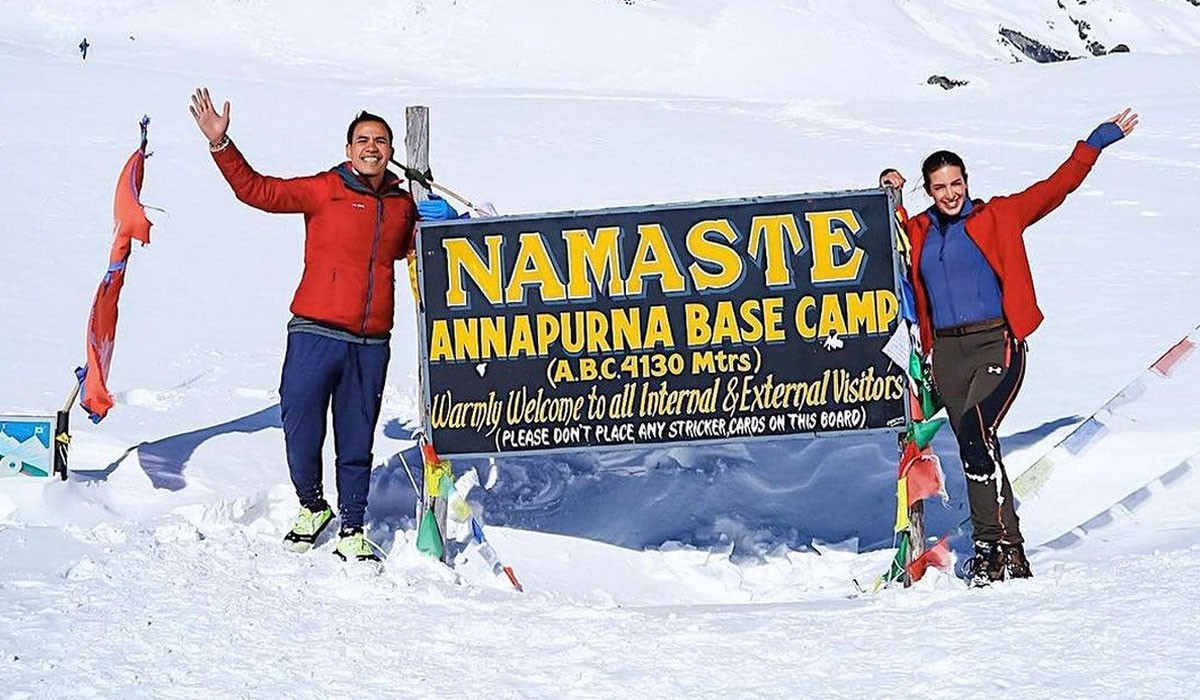
The winter season in Nepal, which starts in December, reaches its peak in January, so the winter landscapes of the Annapurna region are most striking during this month. Even your trekking trails in the higher regions are completely covered by pristine snow, and the frozen lakes add further magic to the enchanted winter wonderland. If you want to experience the magnificence of the Himalayan region at its peak, you should try the Annapurna Base Camp trek in January.
However, as the winter reaches its peak during this month, you should pack warm clothes and the necessary equipment to stay warm during your exciting adventure. The temperature of the trekking trail in this month is about 5°C to 10°C and the night temperature can drop up to -10°C to -15°C. The temperature in the alpine environment (above 4,000 meters) is generally cold and sees a lot of freezing wind even during the day, so prepare adequately to take on this exciting exploration.
Annapurna Base Camp Trek in February
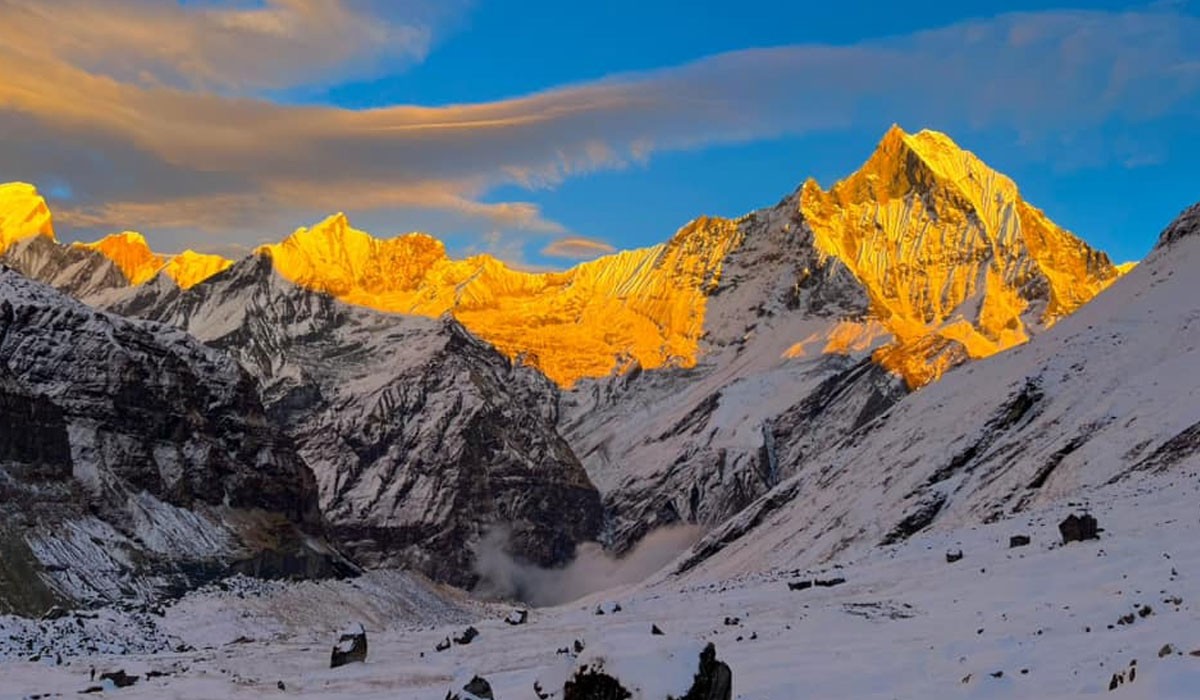
February is a unique period, even among the months of the winter season, for Himalayan exploration. As this season is close to the blooming season of the spring, you can expect the magnificent of the dual season, especially if you are trekking during the late-February. The month of February isn’t as cold as the prime month of winter, January, but still, the magnificent beauty of the snow-clad landscape is at its prime in the alpine environment.
However, as the spring season slowly starts to awaken, the little fragments of the spring slowly start to show up in your trekking trails. And, if you are doing this trek in the latter part of the month, you might even be lucky to witness the first bloom of the spring season. The temperature of the Annapurna region at the trekking trail averages between 8°C to 12°C during February, and the night temperature can drop up to -2°C to -14°C.
Trek Duration
The duration of the Annapurna Base Camp Trek is approximately 8 to 14 days; you will cover an approximate trekking distance of 110 km during your about two weeks of Himalayan exploration. The duration of your trekking adventure may differ slightly depending on the route, number of rest days, side detours, and exploration of the highlights in the region.
We here at Marvel Adventure offer the best-value trekking package, 11 Days Annapurna Base Camp Trek, for an immersive and gratifying experience. If you are looking for an extensive adventure, Annapurna Base Camp via Poonhill 13 Days and Annapurna Base Camp Trek 14 Days are a few of the other alternative packages. Similarly, for a short and sweet exploration of the region, you can choose either the Annapurna Base Camp 7 Days or the Annapurna Base Camp Trek 5 Days trekking packages.
Why Annapurna Base Camp Trek in January and February?
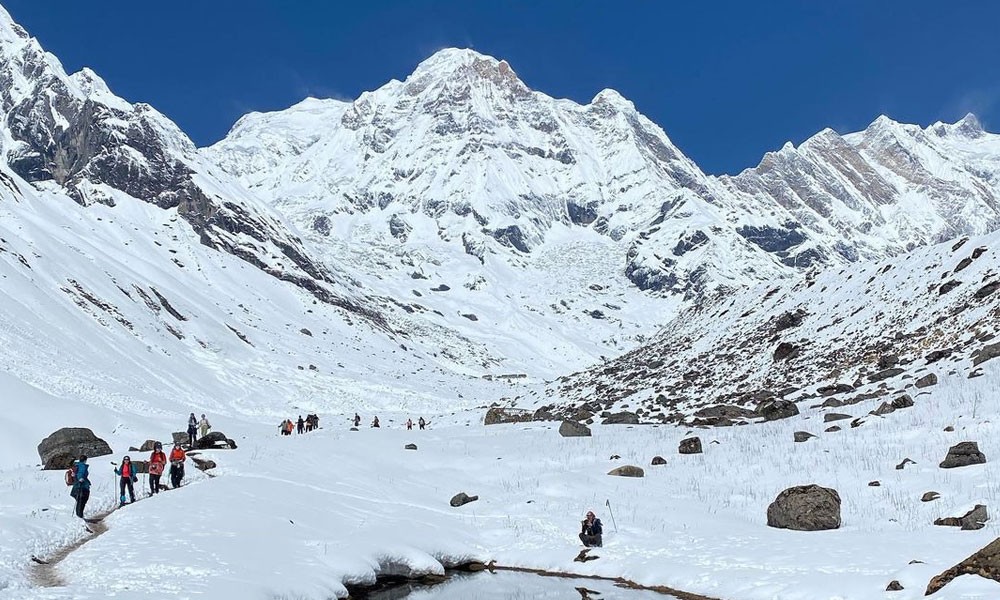
Unique Exploration Prospective
Even if you have previously done this trek in any other seasons, the winter perspective of this exploration is simply magical. Doing Annapurna Base Camp Trek in January and February introduces you to the prime months of the winter that lets you explore a different side of the region at its pinnacle.
The entire landscape of the entire Himalayan region is covered with soft blankets of pristine snow, which gives a distinctive transformation to the region, unlike any other season. You might experience similar trekking experiences in the region in other seasons like spring, monsoon, and autumn. However, the unique blend of the striking light the snow-clad landscapes of the winter add to your adventure is simply otherwordly.
Clear Views and Crisp Air
During your trekking expedition in other warmer seasons, the experience might feel slightly draining and sweaty, which is inevitable. But the crisp air during your Annapurna Base Camp Trek in January and February adds freshness to your day-to-day exploration; it is a really unique and exciting experience, and if you are dressed right, you might just want to keep exploring without breaking a sweat.
As for the views, many trekkers have the misconception that winter doesn’t offer clear views; however, it is the exact opposite. Despite the colder climatic conditions, the months of January and February have clear skies and offer the most spectacular views of the Himalayas. You will be able to enjoy breathtaking wide Himalayan vistas covered with sparkling snow as far as your eyes can reach.
Less Crowded Trails
As the winter is the off-season for Himalayan adventures in Nepal, there are only a few trekkers on the trail during these months. Annapurna Base Camp Trek in January and February offers you an incredible opportunity to relish the true magnificence of the Himalayan region in a peaceful and serene setting.
You won’t have to rush at the trekking trails during your trek, and you can also take your time with the highlight exploration. The peaceful ambiance and solitude during your adventure will offer you a more intimate experience and opportunity to connect with nature.
Festive Vibrance
Besides the exhilarating trekking experience of the unique prospects of the Himalayan region in its prime, Annapurna Base Camp Trek in January and February also lets you immerse in the festive atmosphere of the country. Nepal celebrates delightful festivals like Maghe Sankranti, Basanta Panchami, Saraswati Puja, Sonam Lhosar, Maha Shivaratri, etc, during January and February.
Lower Cost
The prices for the trekking packages and services along the trekking trail are generally high during the peak season as trekkers from all over the world flock to the region. However, when doing the Annapurna Base Camp Trek in January and February, there are significantly fewer trekkers. So, to promote tourism in these off seasons, the hotels, teahouses, and even trekking agencies offer special discounts as well as extra amenities to your trekking package.
So, not only will you be doing an iconic expedition at low prices, but you will also be able to enjoy the extra perks of the off-season. Discounted package rates, flexible booking policies, personalized services, upgraded room options, complimentary services, etc, are some of the pros of doing the Annapurna Base Camp Trek in January and February.
Difficulty During Annapurna Base Camp Trek in January and February
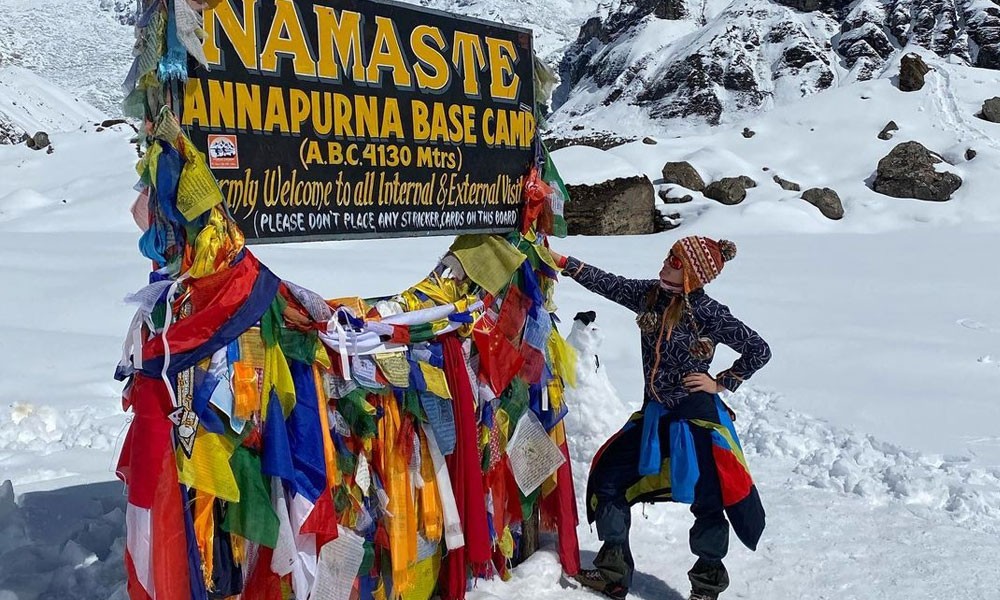
The Annapurna Base Camp Trek is a ‘moderate’ level of trekking adventure, you don’t need any kind of technical skills or experience to take part in this beautiful Himalayan exploration. However, this expedition is still a Himalayan adventure that takes you to the high-elevation points of the Annapurna region, so you underestimate the hurdles in this trekking adventure.
There isn’t a proper way to effectively assess the overall difficulty level of this expedition; some might find it easy to deal with a few difficulty factors of this adventure while struggling with other hurdles. For instance, trekkers who are physically fit may find the long hours of trekking an easy feat. Meanwhile, people born and living at a higher altitude may have a slight advantage in the acclimatization process.
So, the difficulty of the overall expedition all boils down to the physical capabilities of each individual and how well they are prepared for this trek. Let's discuss some of the major hurdles that you have overcome during your trek.
Altitude Sickness: The risk of altitude sickness is high for a human body at an altitude of over 2,500 meters. Although the elevation gain in this trekking adventure is not as high as other Himalayan adventures, you will still push for the high elevation point of 4,130 meters (13,549 feet) at Annapurna Base Camp. So, you will still need to pay attention to your body language and stay attentive toward the symptoms of altitude sickness.
Trekking Duration: During your Annapurna Base Camp Trek in January and February, you will cover the trekking distance of approximately 110 km. That means you will cover a walking distance of about 6-7 hours during the trekking part, which is certainly physically demanding. It can be even more challenging with the increase in altitude; you may find it more difficult to execute even millennial tasks at the higher regions with thin air.
Acclimatization: If you have done any high-altitude adventures, then you understand the significance of acclimatization in your journey. This not only allows your body to properly rest and replenish the lost energy but also helps you to keep the altitude sickness at bay. However, acclimatizing properly in cold climatic conditions can be slightly more challenging than in the warmer seasons.
Weather Factor:When doing Annapurna Base Camp Trek in January and February, you have to understand that these are the months of the off-season. Trekking in these months can be slightly more challenging and demanding than doing the same trekking adventure in the peak seasons like spring and autumn. For instance, you have to traverse across the trekking trails covered in snow, deal with cold climatic conditions, and carry heavy clothes as well as equipment to protect yourself from freezing temperatures.
Read this next:
How to Prepare for Annapurna Base Camp Trek in January and February?

Although doing the Annapurna Base Camp Trek in these months of winter season may seem like an inconceivable challenge, with the right mindset and enough preparation, you can enjoy this iconic trekking adventure in these months like any other season.
Train Adequately
One of the crucial factors when it comes to reducing the overall difficulty level of a Himalayan adventure. You need to set an adequate amount of training period and effective training programs to make your experience comfortable and enjoyable. The minimum recommended preparation period for the Annapurna trek is about 4 to 6 weeks; you can consult a trainer or a guide to design an effective training program for the trek. As you have to overcome long hours of training at rising altitudes, strength, endurance, and cardiovascular exercises are some of the most efficient workout plans.
Pack Right
It is no secret that January and February are the months of the winter season, and the temperature of the high-altitude region is at freezing conditions. If you don’t pack the right gear and the right set of clothes to keep yourself warm during your adventure, you can get sick easily and even put yourself at risk of frostbite. So make sure you are warm, cozy, and comfortable with all the right equipment to enjoy this exhilarating trekking expedition in these months.
Stay Hydrated
You might not feel particularly sweaty or thirsty during the long hours of trekking in these months of the winter season due to the cold and crisp climatic conditions. Don’t forget to keep yourself hydrated throughout the trekking adventure; you should drink at least 3-4 liters of water during every day of your adventure. Make sure to carry a thermos to keep your water lukewarm and make it easy for you to drink it.
Learn Snow Skills
As you will be traversing across the snow-covered trail during your Annapurna trek exploration in the months of January and February. It will be best if you learn some snow skills for your exploration; some skills like self-arrest techniques, walking using crampons, route finding on snowy landscapes, snow stability assessment, cold weather survival skills, avalanche awareness, etc. are some of the life-saving snow skills that can come handy during your trek.
Choose the Right Package
When it comes to high-altitude adventure, you need to make sure to choose the right package with enough acclimatization days. You also don’t want to experience a rushed expedition which puts you at risk of altitude sickness. So, the best way for you to experience the magnificence of the Annapurna region in the winter region is to hire a government-registered trekking agency that will oversee every aspect of your adventure.
We here at Marvel Adventure offer the most remarkable exploration package of the Annapurna region, the 11-Day Annapurna Base Camp Trek, for your exciting adventure in the months of January and February. For booking or any kind of queries, make sure to contact us via our Contact Page; our representatives are available 24/7 for your assistance.
Food and Accommodation
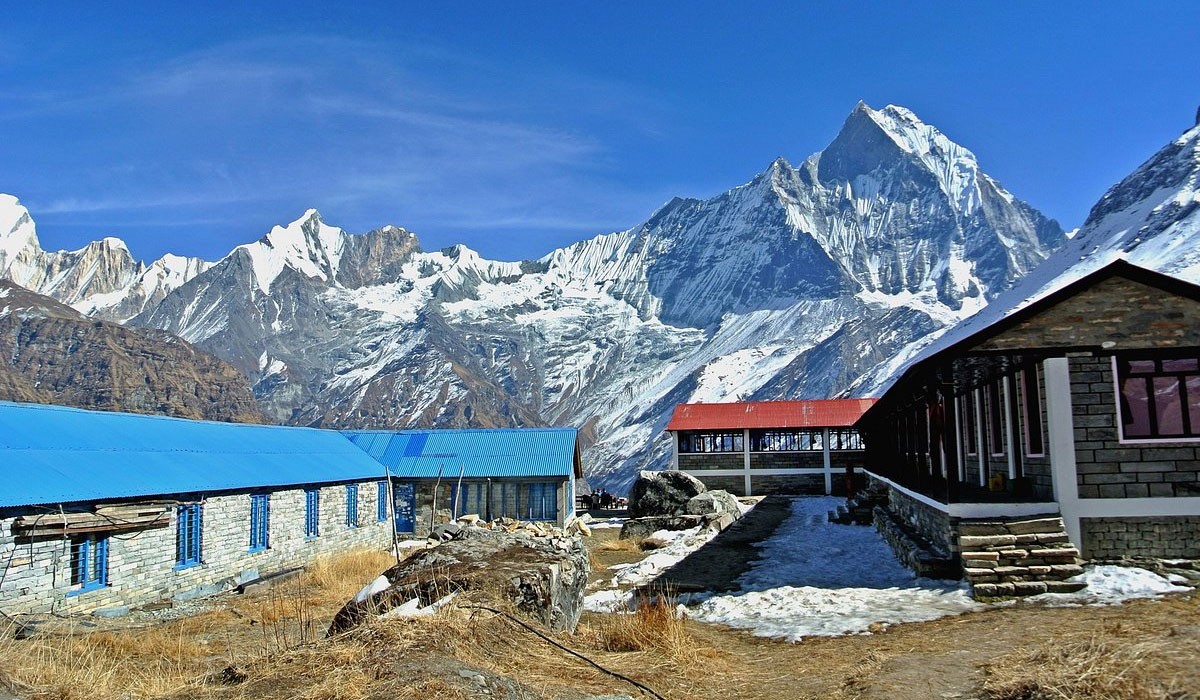
The Annapurna region is the second most popular trekking destination in Nepal; this mainstream trekking route sees trekkers even during the off-season. So, rest assured, you will able to enjoy a wide range of delicacies during your exploration in the months of January and February. Your food menus along the teahouses in your trekking trails will comprise diverse delicacies that include the local traditional dishes, continental star dishes, and Tibetan as well as Indian cuisine-inspired menus.
For Breakfast: You will be able to enjoy light dishes like bread-toasts with jam, honey, butter, eggs, cornflakes, oats, pancakes, paratha, Tibetan bread, cereals, porridge, coffee, tea, fresh juice, fruits, etc
Lunch and Dinner: Your dinner comprises the popular traditional meal in the country, dal Bhat Tarkari (steamed rice, lentil soup, and vegetable dishes), momo, Chowmein, Pizza, pasta, macron, soup, spaghetti, dhindo, Gundruk, Thukpa, Shyaphale, spring rolls, fries, steak, etc
**Note: Vegetarian and vegan options are also available at the teahouses during your trek; you can request your guide or chef directly to exclude the ingredients you don’t prefer from your meal**
Accommodation
During your Annapurna Base Camp Trek, you can enjoy a moderate to luxurious level of accommodation services as it is one of the highly sought-after mainstream Himalayan trekking destinations. In your standard trekking package, you will stay in the well-furnished room at the teahouses; the rooms are mostly in dormitory style with two to three adjacent beds.
Your beds are equipped with comfortable mattresses, and you will receive a pillow and blanket during your stay. For the bathroom facilities, you will use a shared vicinity in a standard package for a more personalized experience; you can upgrade to a luxury package or custom-tailored packages.
